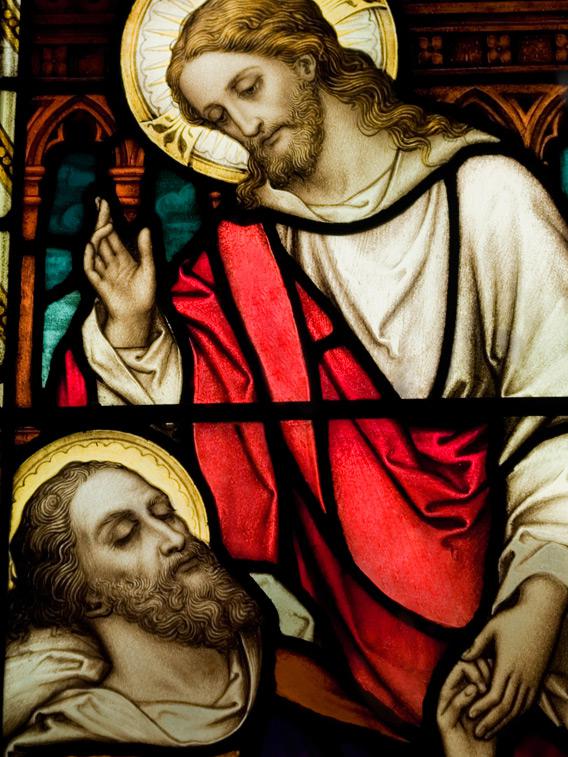It’s time to celebrate the birth of Jesus, the Christian savior and owner of a divine mane of flowing locks. We know that “Jesus” was a pretty common name back then, but was his trademark hairstyle normal for the time?
No. It’s very unlikely that the Jesus hairstyle shown in religious icons has anything to do with his actual coiffure. A Roman triumphal arch from that era depicts enslaved Jews with short hair, and one of the earliest images that scholars think could be Jesus—on a third-century chapel at Dura-Europos in modern Syria—also shows men with short hair. The early Christian evangelist Paul wrote, “Doth not even nature itself teach you that if a man have long hair, it is a shame unto him?” Paul may never have seen Jesus in the flesh, but he would have known the popular hairdos of the time.
The classic image of a bearded, long-haired Jesus emerged as the favorite in the sixth century. Early Christians painted Jesus’s hair in many different ways— long or short, curly or straight, bearded or clean-shaven. There’s even a bald Jesus on display in the British museum. The artists probably weren’t attempting to create a historically accurate image of the man. The New Testament offers virtually no physical description of him, so they would have based the portraits on their own, diverse ideas of what a god should look like. Some philosophers, like St. Augustine, appreciated the diverse ways of portraying the incarnate Jesus. He thought ineffability was more consistent with divinity. It’s easy to paint a man, he agued, but hard to paint a god.
There are two possible explanations for why the bearded, long-haired Jesus eventually won out. Some think the depictions were based on the iconography of Roman gods. Romans who viewed Jesus as the son of God would have likened him to second-generation pagan deities like Apollo and Bacchus—clean-shaven and youthful, with mid-length, curly locks. But as he increasingly came to be thought of as the king of kings, sitting on a heavenly throne, his image had to resemble the patriarchs of Olympus. Neptune and Jupiter were mature and bearded, with longer manes of hair.
Art historian Herbert Kessler of Johns Hopkins offers a more specific explanation. Pagan gods who were associated with water, like Neptune, often had long-flowing hair that merged with the water itself in statues and paintings. Ancient cities built at the confluence of waterways had their own local river gods who were similarly depicted. Jesus, too, had a relationship with water. He walked on water, he turned water into wine, and, in early paintings, he’s often shown above the four rivers of paradise. Early Christians might have favored the long-haired Jesus because they identified that hairstyle with water gods.
There have also been suggestions that early portraitists confused Jesus of Nazareth with the religious order of the Nazirites, who vowed not to cut their hair. This explanation, however, is inconsistent with the many short-haired Jesus images that survive from antiquity.
Got a question about today’s news? Ask the Explainer.
Explainer thanks Robin Jensen of Vanderbilt University, Herbert Kessler of Johns Hopkins University, and archaeologist-anthropologist Joe Zias.
